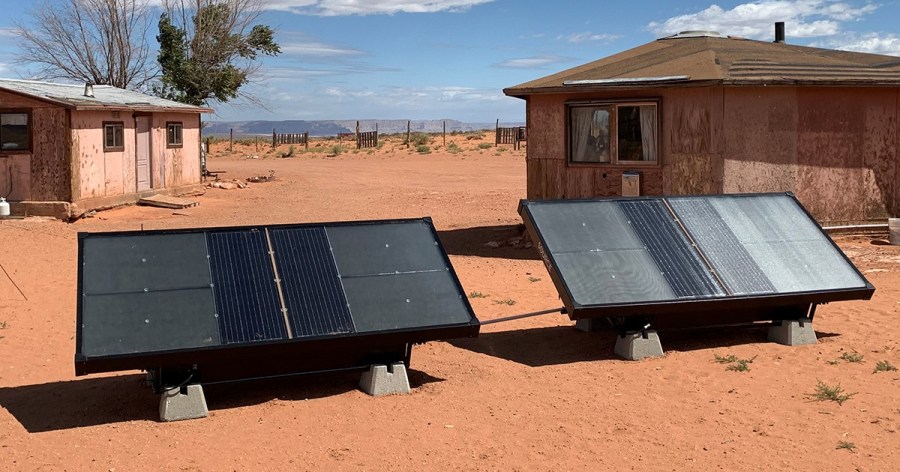
On the rooftop of Source Global’s headquarters in Scottsdale, Arizona, you’ll find an installation of what looks like solar panels, but do something very different. They’re called hydropanels, and they pull water vapor straight out of the dry, desert sky to create drinking water.
“Think about the way that if you leave the lid off the sugar bowl, how over time it gets a little bit clumpy,” said Cody Friesen, the company’s founder and CEO. “Obviously, the sugar is absorbing water vapor from the air.”
Hydropanels are based on the same principle.
“We have a material that’s engineered to do that same process very rapidly,” Friesen said. “We then show those materials to sunlight, which causes the water vapor to respire,” meaning the water vapor is evaporated and condensed to create liquid water.
“We do that many, many times per day,” he said. “And so very efficiently now we can produce drinking water really anywhere.”
Even in bone-dry Arizona.
“Water vapor is actually everywhere on the planet, and even when it’s hot and dry out, hot air holds a lot more water vapor than cold air,” he said.
As climate change brings more frequent and severe droughts, water-stressed communities are looking for new sources of drinking water. Source hydropanels are producing drinking water in 52 countries, Friesen said, and the company has plans to expand rapidly.
Each panel can produce about five liters of water per day. Friesen said two panels produce enough cooking and drinking water for a typical family. And in places where clean drinking water is scarce, like the Navajo Nation, that can be a lifeline. A mix of private and federal funding has helped the Navajo Nation install hydropanels on more than 500 homes.
“As soon as you have a hydropanel in your home, you own, intrinsically, your own drinking water supply,” Friesen said.
A two-panel installation costs about $7,500. Based on average prices from the Beverage Marketing Corp., buying the same quantity of bottled water could cost between almost $500 and $3,000 a year.
But how does the atmospheric water taste? In the kitchen at Source headquarters, near the Pac Man arcade machine, there’s a dispenser fed by the hydropanels on the roof. It tastes — like water. And on a hot day in Arizona, that’s what matters.
You can hear more about how tech is helping solve water challenges in the West on the latest season of our climate solutions podcast, “How We Survive.”
The future of this podcast starts with you.
Every day, the “Marketplace Tech” team demystifies the digital economy with stories that explore more than just Big Tech. We’re committed to covering topics that matter to you and the world around us, diving deep into how technology intersects with climate change, inequity, and disinformation.
As part of a nonprofit newsroom, we’re counting on listeners like you to keep this public service paywall-free and available to all.
Support “Marketplace Tech” in any amount today and become a partner in our mission.


















